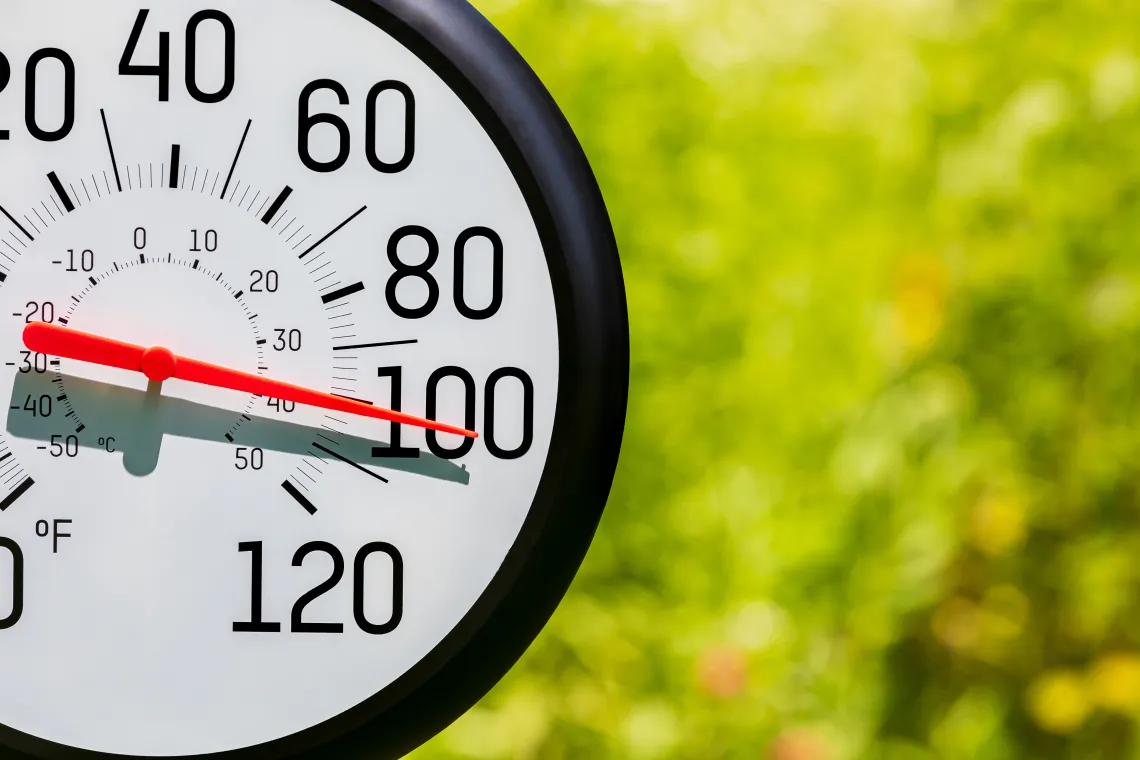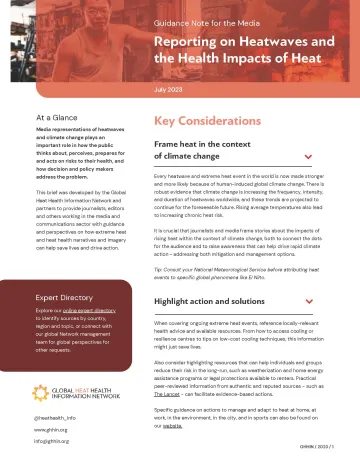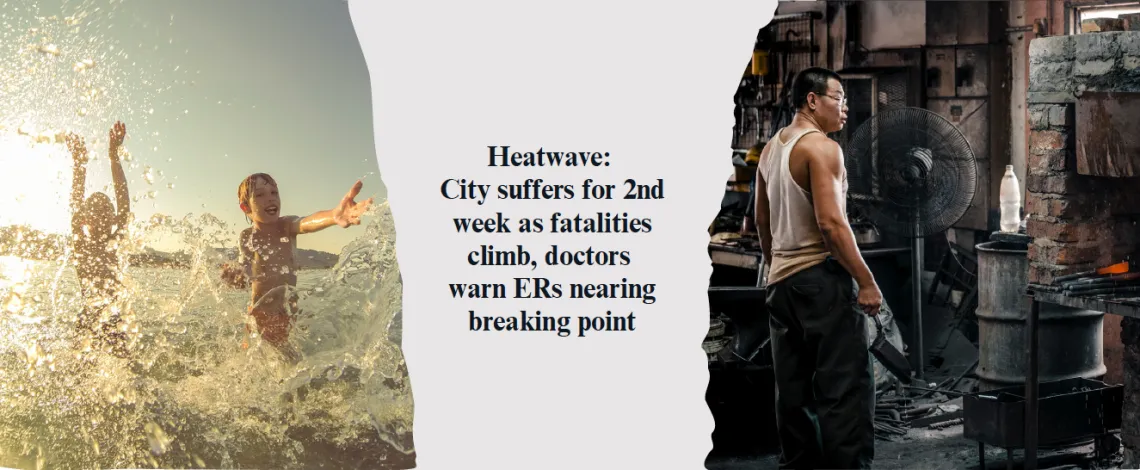New Media Guide Offers Tips for Journalists Reporting on Extreme Heat Events
The Global Heat Health Information Network’s free resource for members of the press aims to help make reporting on heat more impactful, effective and beneficial for the public.

It came as no surprise to heat policy expert and Udall Center Faculty Research Associate Ladd Keith that the media requests started coming and they wouldn’t stop coming as Phoenix, Arizona was experiencing its worst heatwave in documented history.
All 31 days in July 2023 saw temperatures in Arizona’s capital surpass the 110-degree-Fahrenheit mark, obliterating the previous record of 18 consecutive days above 110 degrees set in 1974.
Things didn’t cool down when the sun set, either. Most nights the low temperature stayed above 90 degrees, with the average daily temp clocking in at a scorching 102 degrees. And, though the heatwave in Phoenix was attracting the most attention, heat domes were also in place in Asia, North Africa and the North Atlantic at the same time.
In fact, July 2023 was confirmed to be the hottest month ever on record for the entire planet.
Keith’s schedule was quickly filled with media requests from journalists around the world. He appeared in a BBC News television broadcast, sat for interviews with the Christian Science Monitor, CNN, the Daily Herald and the Daily Mail. The Hill, Bloomberg and the Associated Press queued up for comments, as did local outlets like ABC 15, UA News and the Buckmaster Show on KVOI 1030 AM radio in Tucson.
Having quite a bit of experience with this increasingly common cycle in which news reporters reach out for comment as the temperatures break records summer after summer, Keith has become well acquainted with the standard fare when it comes to heat reporting.
And, as a contributing author to a new guide for journalists and members of the press called “Reporting on Extreme Heat and Health,” he’s also got some advice on how to make sure news covering extreme heat events is sending the right message.
The Guide

The guide to 'Reporting on Extreme Heat and Health' is available to view online or download as a pdf at ghhin/org/press.
In addition to his posts at the Udall Center and as Assistant Professor of Planning and Sustainable Built Environments at the UArizona College of Architecture, Planning & Landscape Architecture, Keith is also a member of the management committee for the Global Heat Health Information Network (GHHIN).
Maintained as partnership between the United Nations, the World Health Organization and the World Meteorological Organization, GHHIN is a convening of global heat and heat health experts from around the world dedicated to helping disseminate information about global heat health to the general population in an effort to spread awareness and help policymakers better “protect populations from the avoidable health risks of extreme heat in our changing climate.”
Anticipating the inevitable influx of media requests for the experts on the team, 11 members of GHHIN including Keith banded together to create the new media guide.
“With the increased attention occurring this summer,” Keith says, “we wanted to make sure that the media had a fact-based resource” on how to better report on extreme heat events.
The guide includes a host of practical recommendations for journalists covering heat, including advice to raise awareness about the potential for extreme heat events before they occur so that people can prepare for them in advance, as well as suggestions to highlight actions people can take to mitigate the impacts of heat, to acknowledge the unequal impacts of heat in their reporting and a call to tie increasingly frequent extreme heat events to climate change.
“A lot of journalists are new to the topic of heat and are covering it for the first time,” Keith says, pointing out that common deficits in heat-related stories are rarely a result of “ill will” on the part of the reporters. But, he says, a careful consideration of their approach to covering extreme heat “can result in more in-depth stories and different angles that might be interesting.”
Imagery That Matches the Tone

This image from the downloadable guide asks readers to determine which of the two images pictured fits better with the headline discussing a dangerous heatwave.
Keith says that one of the most common disconnects in reporting about extreme heat is related to the images that accompany such stories.
“The headline might start with something like ‘Killer heat’... and then it will show children at the park with ice cream cones or people at the beach playing.” Keith says this type of mixed messaging can be confusing to the general public. “We want to make sure that the media is showing the impacts of heat and, if people are suffering from heat, not picking stock images of kids at a park playing because, in actuality, there are no children out at the park when it’s 110,” says Keith.
Having been in a position to search for visual aides for his own presentations on heat, Keith admits that it can be difficult to find images that tell an accurate story of the situation sensitively.
“We don’t want to just show people suffering, either, because those can be insensitive and create other issues. But we want to cover the issue fairly and show the actual impacts that are happening,” he says.
Keith reports that GHHIN’s new guide has been well received by the press. “We’ve gotten really good feedback from journalists,” he says.
The full media guide can be viewed for free on the GHHIN website here and is also available for download as a six-page PDF.

